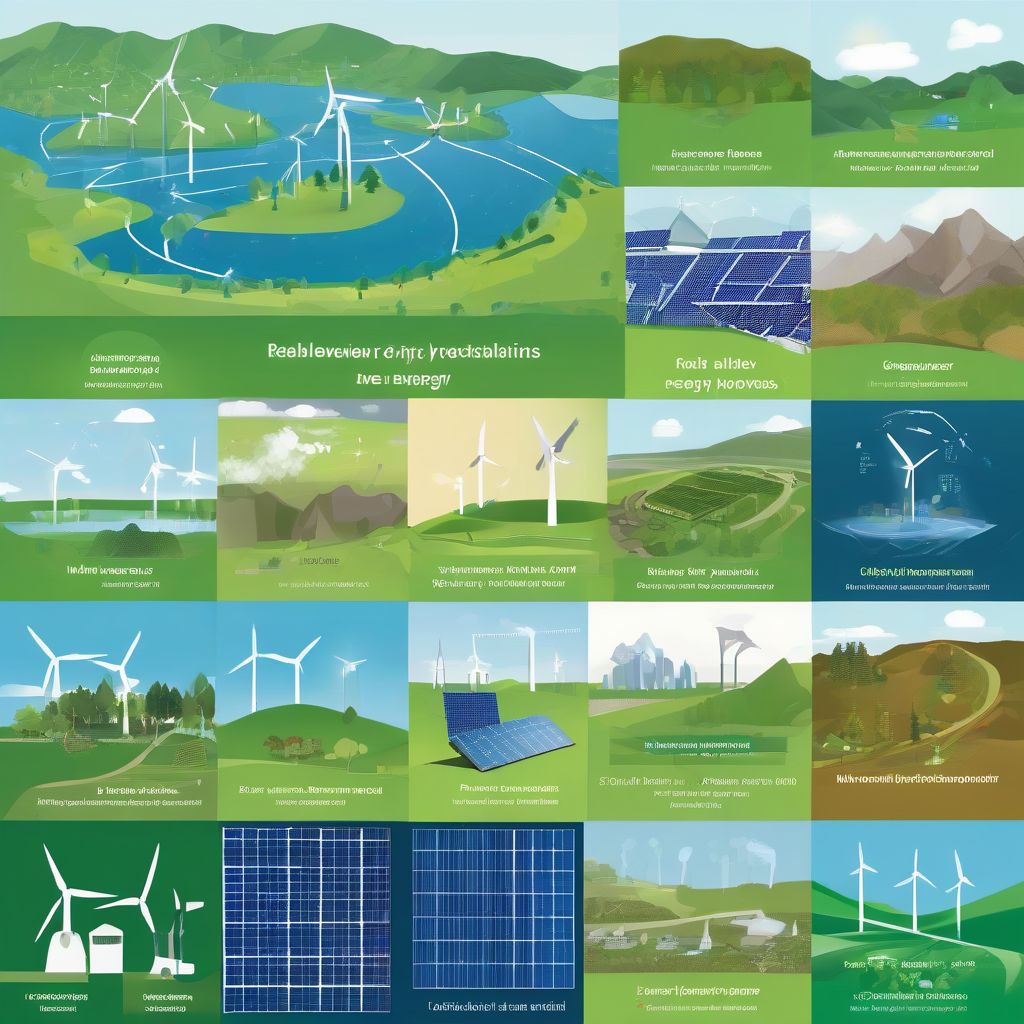Imagine a world powered by the sun, wind, and water – a world where clean energy fuels our lives and protects our planet. This isn’t a futuristic dream, it’s the promise of renewable energy, and it’s a key player in the fight against climate change. But how exactly does renewable energy support our climate goals? Let’s dive in.
Understanding the Climate Change Challenge
Before we explore the role of renewables, let’s briefly recap the climate change problem. The burning of fossil fuels (coal, oil, and natural gas) releases greenhouse gases, primarily carbon dioxide, into the atmosphere. These gases trap heat, causing a gradual warming of the planet and leading to a cascade of negative consequences, from rising sea levels and extreme weather events to disruptions in ecosystems and human health.
How Renewables Offer a Solution
Renewable energy sources, such as solar, wind, hydro, geothermal, and biomass, offer a stark contrast to fossil fuels. Their biggest advantage? They produce little to no greenhouse gas emissions during operation. This fundamental difference makes them a crucial tool in mitigating climate change.
Reducing Greenhouse Gas Emissions
The most direct way renewables support climate goals is by reducing the amount of greenhouse gases we release into the atmosphere. By replacing fossil fuel-based power plants with renewable energy facilities, we significantly decrease our carbon footprint. This shift helps us move towards a net-zero emissions future, a critical target for limiting global warming.
Decentralizing Energy Production
Renewable energy technologies often enable decentralized energy production. This means that power generation can happen closer to where it’s consumed, reducing transmission losses and increasing energy independence. Think rooftop solar panels powering individual homes or wind turbines supplying electricity to a local community. This distributed generation model enhances grid resilience and reduces the vulnerability of energy systems to disruptions.
Creating Economic Opportunities
The transition to renewable energy is not just an environmental imperative; it’s also an economic opportunity. The renewable energy sector is a growing industry, creating jobs in manufacturing, installation, maintenance, and research. This economic growth can benefit communities and contribute to a more sustainable and equitable future.
Enhancing Energy Security
Relying heavily on fossil fuels exposes nations to volatile global markets and geopolitical uncertainties. Renewable energy sources, being domestically available in most cases, enhance energy security and independence. This stability is crucial for long-term planning and sustainable development.
Different Types of Renewable Energy and Their Contributions
Different renewable energy sources contribute to climate change mitigation in unique ways:
Solar Power: Harnessing the Sun’s Energy
Solar photovoltaic (PV) panels convert sunlight directly into electricity, while concentrated solar power (CSP) systems use mirrors to focus sunlight to heat a fluid, which then generates electricity. Both technologies are emission-free during operation and offer a clean alternative to fossil fuels.
Wind Power: Capturing the Power of the Wind
Wind turbines convert the kinetic energy of the wind into electricity. Wind farms, both onshore and offshore, are becoming increasingly common and offer a scalable solution for clean energy generation.
Hydropower: Utilizing the Force of Water
Hydropower harnesses the energy of moving water to generate electricity. While large-scale hydropower projects can have environmental impacts, smaller-scale hydro and pumped hydro storage offer valuable contributions to a clean energy mix.
Geothermal Energy: Tapping into Earth’s Heat
Geothermal power plants use heat from the Earth’s core to generate electricity. This renewable source is reliable and provides a constant baseload power supply.
Biomass Energy: Utilizing Organic Matter
Biomass energy involves burning organic matter, such as wood or agricultural residues, to generate electricity or heat. While biomass combustion does release some emissions, it can be a more sustainable option than fossil fuels if sourced and managed responsibly.
 Renewable Energy and Climate Change
Renewable Energy and Climate Change
Overcoming Challenges and Embracing the Future
While the benefits of renewable energy are clear, challenges remain. These include intermittency (the variability of solar and wind power), storage solutions, grid integration, and initial costs. However, ongoing technological advancements are addressing these challenges, making renewable energy increasingly cost-competitive and reliable.
From advancements in battery storage to smart grid technologies, innovations are paving the way for a cleaner and more sustainable energy future. Government policies, such as carbon pricing and renewable energy incentives, are also playing a vital role in accelerating the transition to a renewable energy-powered world.
Conclusion
Renewable energy is not just a piece of the climate change puzzle; it’s a cornerstone of the solution. By reducing greenhouse gas emissions, enhancing energy security, and creating economic opportunities, renewables offer a pathway to a more sustainable future. While challenges remain, the continued advancement of renewable energy technologies and supportive policies are driving us towards a world powered by clean, reliable, and sustainable energy sources. Let’s embrace this transition and work together to create a healthier planet for ourselves and future generations. What are your thoughts on the role of renewable energy in combating climate change? Share your insights in the comments below! We can also explore more about sustainable living and eco-friendly practices on our blog.



